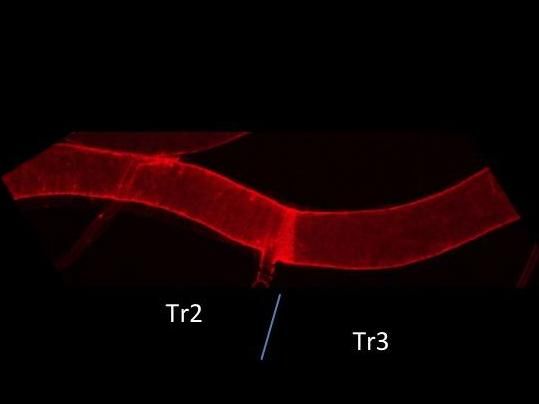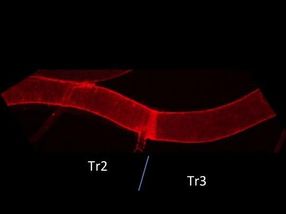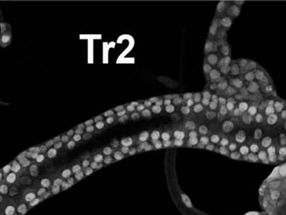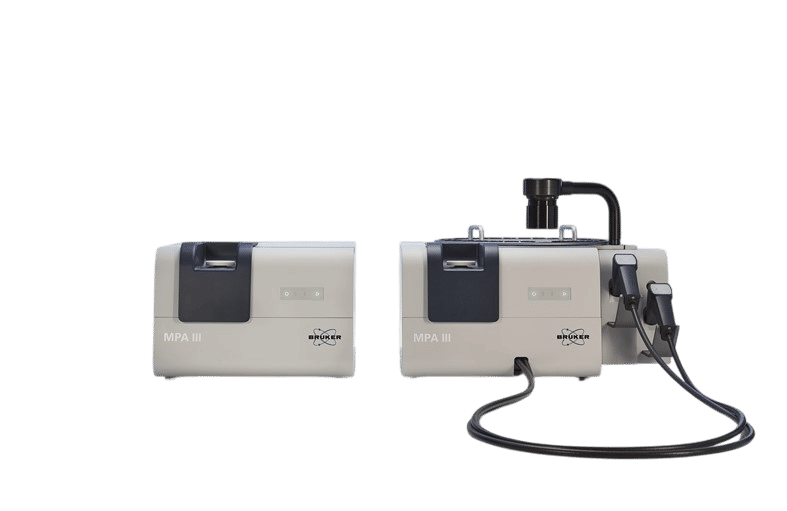Researchers dig up new molecular details on 'the other type' of stem cells
Scientists Nareg J. Djabrayan and Jordi Casanova from the Institute for Research in biomedicine (IRB Barcelona) and CSIC, have identified two molecular signals and the pathway of events that allows cells in a tissue that are already specialized to regain their behaviour as stem cells. The study offers new information about how cells become differentiated and how "this other type" of stem cells, called facultative, get activated, which is of particular interest in cell reprogramming, regenerative medicine, and in understanding cancer.

This image shows a Drosophila trachea fragment. Externally, there is no difference between the Tr2 segment, where facultative stem cells are found, and Tr3, which indicates the rest of the cells in the tissue.
N.J. Djabrayan, IRBBarcelona

This image shows nuclei of Drosophila trachea cells during the transition from larvae to an adult fly. The cells in the Tr2 segment are dividing; they are the facultative stem cells.
N.J. Djabrayan, IRBBarcelona


Facultative stem cells are being identified more and more often in human tissues and organs, but much less is known about them compared to typical stem cells, which have distinct morphological traits. "The existence of facultative stem cells indicates that many differentiatied cells continue to have great plasticity and are able to respond in situations of stress, such as in wounds or in the regeneration of worn out tissues," explains Jordi Casanova, head of the Development and Morphogenesis in Drosophila group at IRB Barcelona.
"This plasticity is good if it is well regulated. If any of the mechanisms involved becomes unbalanced, it becomes dangerous," adds Casanova. "In fact, cellular plasticity in tissues that regenerate often, are associated with organs that have a high incidence of cancer, such as the colon or blood," he explains.
A combination of signals in space and time
The researchers looked at the moment when a Drosophila larva changes into an adult fly. "This model is a good one to identify and study facultative stem cells because there are some cells in the larva that will give rise to the adult fly and they get activated during the switch from larva to adult, a transition which could be considered a condition of stress," explains Casanova.
Concretely, the researchers studied cells with facultative stem cell traits in Drosophila trachea. They showed that only some cells in the tissue receive a spatial signal that marks them. Then, when the transition occurs, a second signal is sent, triggered by hormones, that prompts the reactivation of the stem cell programme. This signal reaches all cells in the tissue, but only those that have been marked previously with the spatial signal are reactivated as stem cells.
"Understanding these signal regulation mechanisms is fundamental in order to control, for example, the reprogramming of cells," indicates Casanova. Using the same model, the scientists now want to investigate which mechanisms allow differentiated cells to maintain their plasticity and how they go from being a differentiated cell to a stem cell and vice versa.
Original publication
Other news from the department science

Get the analytics and lab tech industry in your inbox
By submitting this form you agree that LUMITOS AG will send you the newsletter(s) selected above by email. Your data will not be passed on to third parties. Your data will be stored and processed in accordance with our data protection regulations. LUMITOS may contact you by email for the purpose of advertising or market and opinion surveys. You can revoke your consent at any time without giving reasons to LUMITOS AG, Ernst-Augustin-Str. 2, 12489 Berlin, Germany or by e-mail at revoke@lumitos.com with effect for the future. In addition, each email contains a link to unsubscribe from the corresponding newsletter.
























































